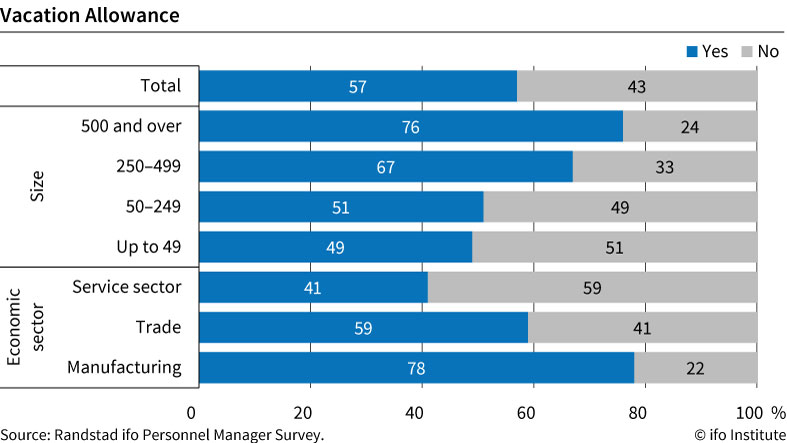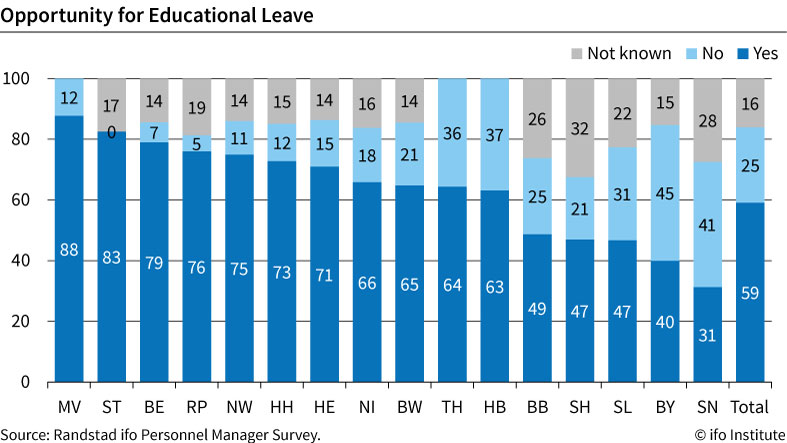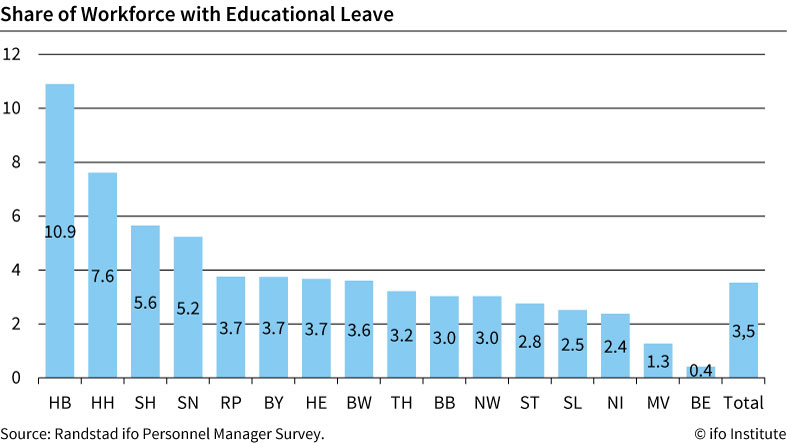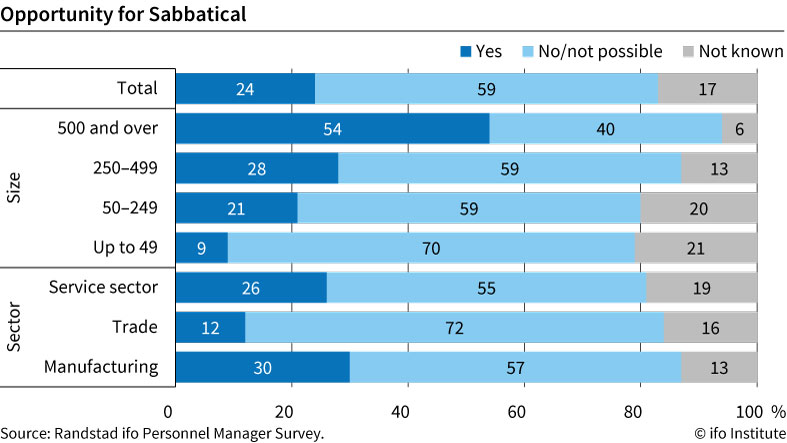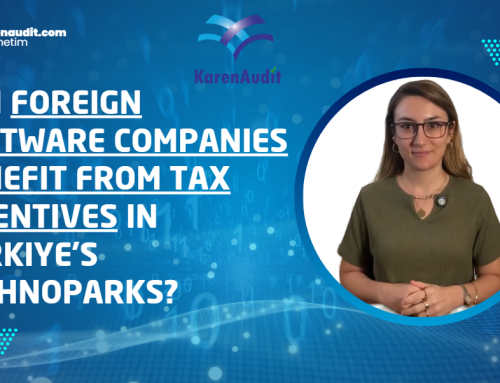April 12, 2023
From Vacation Pay to Sabbaticals – What Is Common Practice in German Companies?
In the first quarter of 2023, the Randstad ifo Personnel Manager Survey focused on the vacation culture in German companies. On average, these grant 29 days of recreational leave. In addition, the questions primarily provide information about vacation pay as well as the various forms of vacation, asking in more detail whether companies offer unpaid vacation, educational leave, sabbatical leave, and “workation” – i.e., the merging of vacation and work – and how these are used. At present, these formats are not very widespread in German companies. It can also be seen that there is a clear divergence between supply and take-up.
More than Half of the Companies Surveyed Pay Vacation Allowances
Whether companies pay annual vacation allowances depends not only on their size but also on their sector of the economy. Large companies (76 percent) and manufacturing companies (78 percent) pay vacation allowances to their employees most frequently. The smaller the company, the less frequently vacation allowances are granted. In the service sector, only 41 percent of companies pay vacation allowances. On average, 57 percent of all companies surveyed do so.
There are also differences in the type and amount of payment: in 62 percent of the companies, the amount of vacation allowance is calculated on a pro-rata basis according to gross salary, while in 38 percent of the companies surveyed, vacation allowances are paid out as a lump sum. If companies pay vacation allowance as a proportion of the gross salary, the amount represents 55 percent of the gross salary on average. This is handled very similarly in the various sectors of the economy. If the payment of vacation allowance is based on a flat rate per day of vacation, this is on average EUR 22.50. The average values vary in the different economic sectors from EUR 17.75 in the service sector to EUR 28.50 in manufacturing. There are also differences between the various size classes: the amount per vacation day increases with the size of the companies. The range is from EUR 17.91 in companies with up to 49 employees to EUR 28.86 in large companies with over 500 employees (50–249 employees: EUR 21.45, 250–499 employees: EUR 23.28).
Educational Leave Offered in the Majority of Cases
There is a legal entitlement to educational leave in almost all federal states in Germany. The exact entitlement is specified in the laws of the respective federal states. Only Bavaria and Saxony are exceptions: here there is no statutory entitlement to educational leave. In the case of educational leave, employers grant their employees paid leave which they use for further training. The special leave is available in addition to the regular company recreational leave. As a rule, this is legally 5 days per year. The training does not necessarily have to be directly related to the employee’s job. In more than half of the companies surveyed (59 percent), employees have the option of taking educational leave. By economic sector, trade clearly stands out from the other two: Thus, this possibility exists in 69 percent of the surveyed industrial companies and 64 percent in the service sector. In contrast, only 35 percent of the companies surveyed in the retail sector have this option. The proportion of companies that grant educational leave decreases as the size of the company decreases: 86 percent of companies with more than 500 employees offer educational leave, in the next smallest it is 77 percent. In companies with 50-249 employees, 57 percent allow educational leave, in companies with up to 49 employees the figure is 41 percent. Due to the non-uniform legal regulations in the individual federal states, it is worth taking a look at the distribution in the individual federal states. As expected, companies in Bavaria (40 percent) and Saxony (31 percent) bring up the rear when it comes to offering educational leave (which is not enshrined in law there). In sharp contrast, 88 percent of the companies surveyed from Mecklenburg-Western Pomerania have such an offer.
Employees Hardly Make Use of Educational Leave
There is a wide divergence between the availability and take-up of educational leave. On average, 3.5 percent of employees in companies offering such leave take advantage of it. While Mecklenburg-Western Pomerania has the highest percentage of opportunities for educational leave, only 1.3 percent of employees take advantage of it on average per year. The difference between the two figures is also very high in Berlin. In Bremen, on the other hand, a relatively large proportion take advantage of the opportunity, but the Land is quite far behind in terms of supply.
One-Fourth of the Companies Surveyed Allow Sabbaticals
Sabbaticals are unpaid special leave that can last up to one year. In just under one-fourth of the companies, employees can take advantage of this. However, this is not possible in the majority of companies (59 percent). A relatively high proportion of companies (17 percent) answered “not known.” While 30 percent of companies in manufacturing allow sabbaticals, the figure in trade is 12 percent. A comparison of size classes shows a clear picture here: the larger a company is, the more likely it is to enable a sabbatical. More than half of the companies with more than 500 employees and one in four companies with 250–499 employees offer unpaid sabbaticals. Sabbaticals are the least likely of the additional offers mentioned here to be taken up: the average share of the workforce is less than 1 percent. The average duration of a sabbatical year is 99 days, with a median of 60 days. The duration is highest for employees in trade, at 127 days, followed by manufacturing, at 117 days, and the service sector, at 87 days. While in companies with 500 or more employees and 50–249 employees the duration is relatively high at 115 days and 111 days, respectively, it is 72 days in companies with 250–499 employees and 36 days in companies with up to 49 employees.
“Workation”: Still Little-Used Potential for Increased Flexibility
In addition to the forms of leave described so far, the term “workation” is appearing more and more frequently. This literally means the fusion of work and vacation. Employees travel to a (vacation) location and work there during their vacation, sometimes with reduced working hours. The expansion of remote work to outside the home makes this form of working possible in principle. Nevertheless, “workation” is still rarely used or offered. This also underlines the novelty of this concept. For this to become part of everyday working life, companies must thoroughly examine the necessary formalities. This is because all forms of work outside the company premises must comply with the statutory provisions on data protection, working hours, and occupational health and safety. Where working from home is possible in principle, this instrument has great potential for maximum flexibility – even if, according to the survey results, only a few companies have ventured to offer this additional option. A total of 8 percent of the companies surveyed offer this. In the service sector, one-tenth of the companies offer this option, in manufacturing 8 percent, and in trade 2 percent. Even if the possibility of “workation” exists in principle in the company, only 3.3 percent of the workforce take advantage of it on average.
Source: ifo Institute
Legal Notice: The information in this article is intended for information purposes only. It is not intended for professional information purposes specific to a person or an institution. Every institution has different requirements because of its own circumstances even though they bear a resemblance to each other. Consequently, it is your interest to consult on an expert before taking a decision based on information stated in this article and putting into practice. Neither Karen Audit nor related person or institutions are not responsible for any damages or losses that might occur in consequence of the use of the information in this article by private or formal, real or legal person and institutions.


